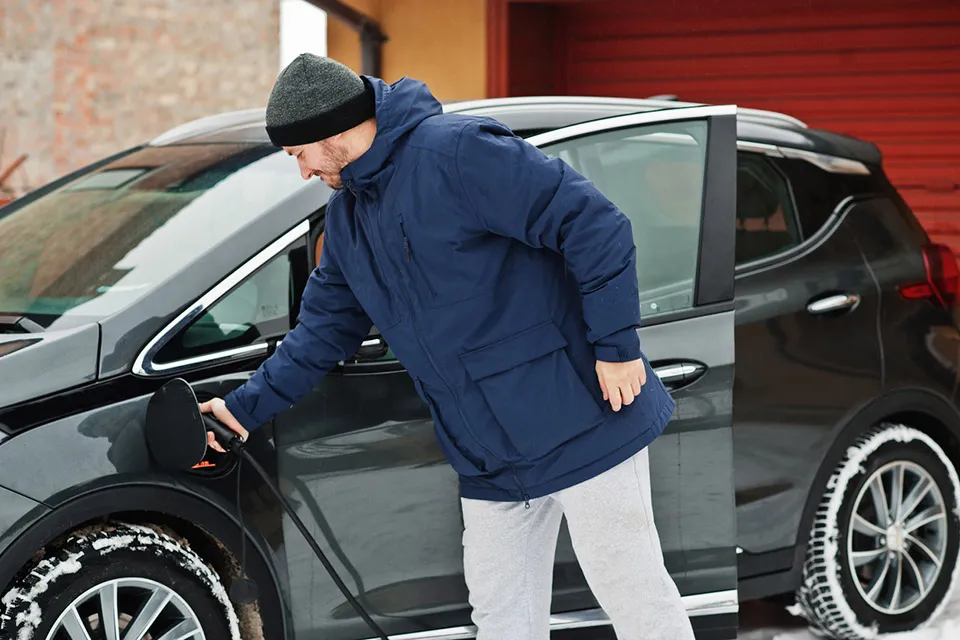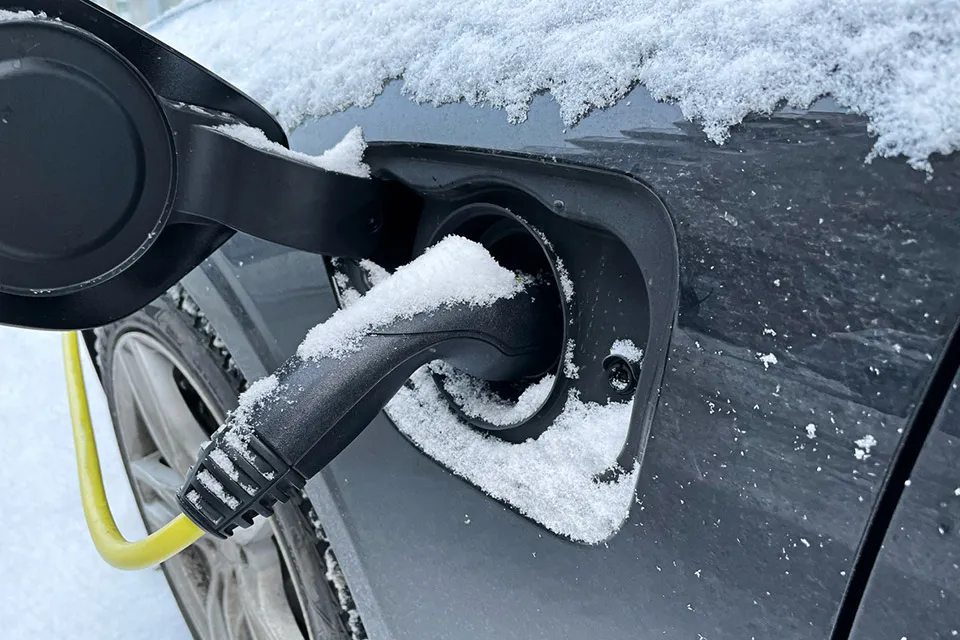How Do Electric Cars Work in Cold Weather?

Most EV owners know that extremely high temperatures or hot climates can have a negative impact on their vehicle's performance. This decline is because EV batteries don't do well in the heat, and if they operate in hot weather long enough, they'll lose range and charge rate. But electric vehicle owners who live in the cold may also notice a drop in EV performance. How well your electric car operates in cold weather depends on several factors, including its manufacturer, brand, charger NEMA rating, and how well you maintain it.
What is a NEMA Rating?
The National Electric Manufacturers Association, or NEMA, is an agency that defines enclosure types; for EVs, this means the enclosure around a charger. These ratings can help consumers see how well these products can withstand certain environmental conditions, like cold weather. There are 21 NEMA enclosure types and subtypes, including:
- Type 1
- Type 2
- Type 3
- Type 3R
- Type 3S
- Type 3X
- Type 3RX
- Type 3SX
- Type 4
- Type 4X
- Type 5
- Type 6
- Type 6P
- Type 7
- Type 8
- Type 9
- Type 10
- Type 11
- Type 12
- Type 12K
- Type 13
Each type provides various levels of protection, though not all are relevant to EVs. For example, products with a NEMA type 3 rating are protected against snow and ice formation, as are Type 3S. Most homes in the US have a NEMA 10-30 outlet or a NEMA 14-30 dryer plug; if you deal with cold weather conditions, you should consider upgrading your system to deal with lower temperatures.
How Do Electric Cars Run In Cold Weather?
Not all EVs are made equal; some manufacturers will include cold weather options to help their equipment function properly. This means components like a heat pump heating system, battery heaters, and comfort features like heated steering wheels and seats. A vehicle history report can find vehicles with these features, as well as other information about their manufacturing origins, accident history, and countless other essential details. These tools can help you get the best possible deals and avoid purchasing cars that may fail in colder temperatures.
Manufacturers with Cold Weather Options
One of the objectives of your research should be to look into which manufacturers offer EVs with winter-specific features. This includes comfort options like heated seats, steering wheels, and more vital systems like heat pumps and battery pack warmers. A heat pump will prevent excess heat from a battery and drivetrain from being wasted, helping make your EV more efficient in any weather conditions. Battery packs, on the other hand, get your EV battery up to the optimal operating temperature; this will help maintain performance and slow battery degradation.
- Tesla: Certain Tesla models have a heat pump standard, while others have it as an option. Tesla Model Y and Model 3 have heat pump options for the model year 2020 and beyond, while the Model S and X have them for vehicles produced after 2021.
- Kia: The EV6 has a standard heat pump with the all-wheel drive version and a winter mode that can warm the battery pack and improve DC fast charging speeds. The Niro EV has a heat pump, but only with their cold weather package (which also includes a battery heater and a heated steering wheel). These innovations help EVs maintain performance and efficiency even in cold weather.
- Polestar: The Polestar 2 comes with heated front seats as a part of their standard equipment, while their Plus Pack option gives the owner a heat pump, heated rear seats, and a heated steering wheel.
- Volvo: The standard package for both the Volvo XC40 and XC40 Recharge comes with heated front seats, but you can get more options with the climate package. This optional package allows you to get a heat pump, heated steering wheel, and heated rear seats.
- Toyota: The Prius Prime, RAV4 Prime Plug-in Hybrid, and the bZ4X all-electric all have heat pump systems as a standard option. There are also heated front seats and steering wheels as an option for the bZ4X, as well as a front lower body radiant heating system and rear heated seats with the Limited trim package.
- Ford: Ford's EV, the Mach-E, generally only comes with comfort-related winter options, though they do have a heated side mirror option that can increase safety. For comfort, they have heated front seats and a heated steering wheel (which comes with the Lariat trim option).
- Chevrolet: The Bolt and Bolt EUV have a resistance heating system that warms the vehicle's cabin and a "comfort and convenience" package that offers a heated steering wheel and heated front seats. If you spring for the Premier trim, you can also get heated rear seats.
- Audi: The Q4 E-Tron has a heat pump option, but it is only available in Europe. For comfort equipment, they have a preheating plug-in system, heated seats, and a heated steering wheel (with specific option packages).
- Hyundai: Hyundai has had the option for a heat pump available since 2019, though they didn't offer it on the US market in 2020. The 2022 Ioniq 5 has the option of a heat pump and battery heater, while the 2023 Ioniq 5 will have these cold weather options standards. Hyundai Kona Electric vehicles have a battery heating system for 2020 models and beyond that is designed to improve charging conditions in cold weather.
How Do EV Batteries Perform In Cold Weather?

Ectric cars can struggle due to the impact of cold weather on their lithium-ion batteries.
Here's why:
When it's cold outside, the chemical reactions happening inside the battery slow down. Think of it like how your phone battery drains faster in the cold. This means the battery can't give out as much energy, which leads to a decrease in how far you can drive on a single charge.
Not only that, but the cold can also make the battery's internal resistance go up. This makes it harder for electricity to flow smoothly through the battery, which can make your electric car feel sluggish and less powerful.
And when you try to charge your electric car in cold weather, it might not accept the energy as quickly. This means it takes longer to charge up, which can be inconvenient when you're on the go.
Plus, being cold means your car needs extra energy to warm up the cabin and the battery. So, even more power gets used up, leaving you with less range to drive.
You can improve your EVs' cold weather performance with simple behavioral changes. For example, one easy way to maximize driving range in winter is to start the vehicle while it's plugged in. This allows the battery to warm up, letting it get to the optimal temperature level for the best possible performance.
FREE Vehicle Search
- Accidents
- Problem Checks
- Title Records
- Recalls
- Values
- Specs
-
InfoPay, Inc. (dba GoodCar) is an Approved NMVTIS Data Provider
-
-























